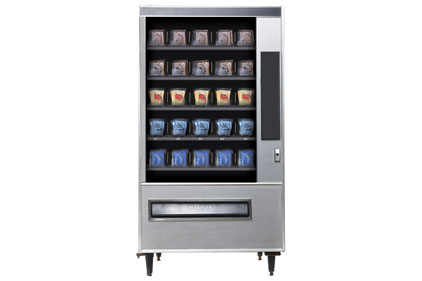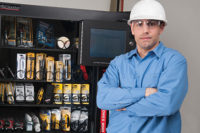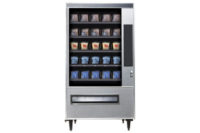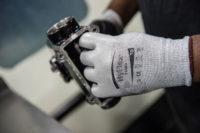PPE vending machines cut costs; increase access

Vending machine use in plants has more than doubled over the past few years, with companies across a range of industries reaping immediate cost benefits. Almost any consumable product can be vended — from work gloves and hard hats to drill bits, chemicals and respirators. Some vending machines include cabinets that allow for dispensation of larger items.
Significant cost savings
As companies continue to operate in a tight economy, they are attracted to vending programs’ projected savings of 25 to 40 percent, which result from increased efficiency, reduced product usage and greater productivity.
In the past, plants typically operated a central tool crib where PPE and other products were stored. The facility might be located 100 yards or more from employee workstations and required workers to leave the production line to obtain safety equipment and other products. Productivity was hampered because workers could be absent for 10 or 15 minutes at a time, two or three times a day.
Once workers arrived at the tool crib, they often had to rummage through a cabinet to find the product style and size they needed. Because the tool crib provided access to products used throughout the plant, individuals sometimes walked away with the wrong PPE, which jeopardized their safety and resulted in non-compliance.
Some tool cribs were unmonitored, allowing workers to take as many products as they wanted. An employee might take three or four pairs of work gloves, with some of the gloves worn at the plant and some taken home for the individual’s personal use. An equipment manufacturer, for example, noticed welding glove usage increased nearly 50 percent during the summer months and discovered workers were taking the hand protection home to wear when they barbecued.
Vending programs are typically very low cost or even free to install. A manufacturer may choose to lease machines or pay a monthly fee, with some suppliers providing machines for no cost when the plant meets minimum product usage requirements. Some vending machine providers offer inventory on a consignment basis and the manufacturer only pays for products dispensed, which can reduce inventory costs significantly.
PPE control and monitoring
Vending machines allow plants to control which PPE is available to individual employees and to track specific products and the quantity of products workers use. Workers generally employ an identification number, an access card or a scanner badge to obtain PPE and other vended products. The machine not only compiles reports on product usage but it can be programmed to dispense only the product an individual worker needs — and in the appropriate size and quantity.
An employee working in an oily environment on an assembly line, for example, may need three pairs of size 9 chemical-resistant gloves during a shift — or 15 pairs of work gloves during a five-day work week. An individual in a packing department may require only one pair of size 7 cut-resistant gloves per day, or five pairs per week.
Most vending machines are hardwired through the Internet and include minimum product levels so when product inventories reach a certain level, the machine automatically sends a reorder to the supplier and the unit is restocked the same or next day. This capability results in better inventory management and ensures safety equipment and other products are readily available to workers. It reduces costs because the plant no longer pays to keep inventory in stock.
Plants benefit from reports capable of providing a universal or micro-view of product usage. Because of the identification required to access products, plant management can determine whether entire departments or individual workers are using the right product at the expected level of consumption.
If a worker uses significantly more or less product during a certain period, a supervisor can follow up and provide guidance as to how long the work glove is serviceable and how often it should be replaced, which helps keep workers safe. This type of situation should be handled carefully to eliminate the chance of workers laboring without any hand protection, which can result in noncompliance.
Plant management or the safety director decides what products will be offered through a vending program and can request the PPE brand workers are presently using. Responsibility for performing a risk assessment and hazard analysis still rests with supervisors and safety personnel to determine the specific type of PPE needed for various applications.
Training
PPE and other products should never be vended without instructing individual workers about each product’s intended use and performance advantages. If a vending machine is not programmed to provide a worker a specific product, the worker must be educated about what product to select. This type of education will reduce the likelihood of a worker who constantly handles sharp instruments, for example, selecting a general purpose glove rather than a cut protective product.
Supervisors may train workers in group sessions or employ a company intranet. Glove boards are an excellent tool for training workers and may be placed on a vending machine or beside it so workers have a constant reminder of how and when to use specific products.
A win-win
An estimated 90,000 vending machines are in use in plants across the U.S., with the industry expected to continue to explode during the coming years. Much of this growth will come from anticipated savings resulting from elevated efficiency, reduced product usage and greater productivity. Injury and indemnity costs are also reduced because a vending program can help plants ensure workers have the right gloves for the job.
PPE vending programs represent a win-win opportunity, requiring little investment while providing a range of benefits.
Looking for a reprint of this article?
From high-res PDFs to custom plaques, order your copy today!





